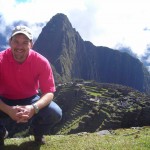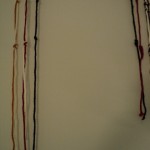 In June 2008 I traveled to the country of Peru as part of the National Science Foundation (NSF) Chautauqua Short Courses for College Teachers.
In June 2008 I traveled to the country of Peru as part of the National Science Foundation (NSF) Chautauqua Short Courses for College Teachers.
For many years the Chautauqua Short Course program was supported by the National Science Foundation and administrated at regional sites around the country. The course that I completed was operated by the University of Texas at Austin – Center for Stem Education. The goal of this national program was to enable teachers in the area of mathematics, science, and the social sciences to interact and assist with data collection and research procedures at various on-site locations around the world, thereby exposing these college teachers to new knowledge and unique research methods as a strategy for broadening their teaching skills and course development at their home institution.
My visit to Peru was significant for several reasons. For one, it provided me with a new awareness and understanding of the contributions that the Inca civilization made to the field of wellness and sport sciences. I experienced firsthand the effects of altitude on physical exertion and fitness. In my Athletic Training course we had discussed how altitude often affects sport teams that travel to places like Denver and the acclimatization period that is necessary to perform at optimal levels. At our hotel, the front desk employees gave us coca leaves to chew as a way to help alleviate headaches and nausea from the altitude, which my classroom students find fascinating.
I also learned more about the Inca mail runners called “chasqui.” The Inca empire created an elaborate system of paths and roads that served as a communication network between villages in which the runners would carry messages to and fro.
Studying in this part of the world allowed me to gain a better understanding of different organizational models and gave me greater appreciation for the basic concepts of statistical analysis, a topic taught and discussed in my EDFN 601: Research Methods course.
In Cuzco, I attended lectures that included modern day construction of a quipu, which is an ancient accounting tool developed by the Inca used for recording numerical information. The Inca empire had no written records in 1300 AD so the quipu played a major role in the administration and function of the society.
Additionally, I was able to learn how diseases such as obesity and disordered eating are affecting populations across the world by collecting some data from the people who live in the cities of Cuzco and Lima. The purpose of this research was to investigate the various ways globalization is influencing eating habits and nutritional patterns, especially among Inca women and girls in Peru. This was a qualitative study consisting of primary sources such as field notes, photographs, and interviews. The main research question was centered on the dimensions of wellness, that is, in what ways are people influenced by the foods they eat in this part of the world. For example, we asked people to describe the typical meals they ate and what they believed to be the most important health aspects in their lives. The results of my research and study have had several applications to the courses I teach such as: EDW 764: Preventing Childhood Obesity, and EDW 752: Eating Disorders and Body Image Anxiety.
Below are a few photos of the stunning geography found in Cuzco and Machu Picchu, and a couple of photos from one of the lecture classes that was a participant in.






















